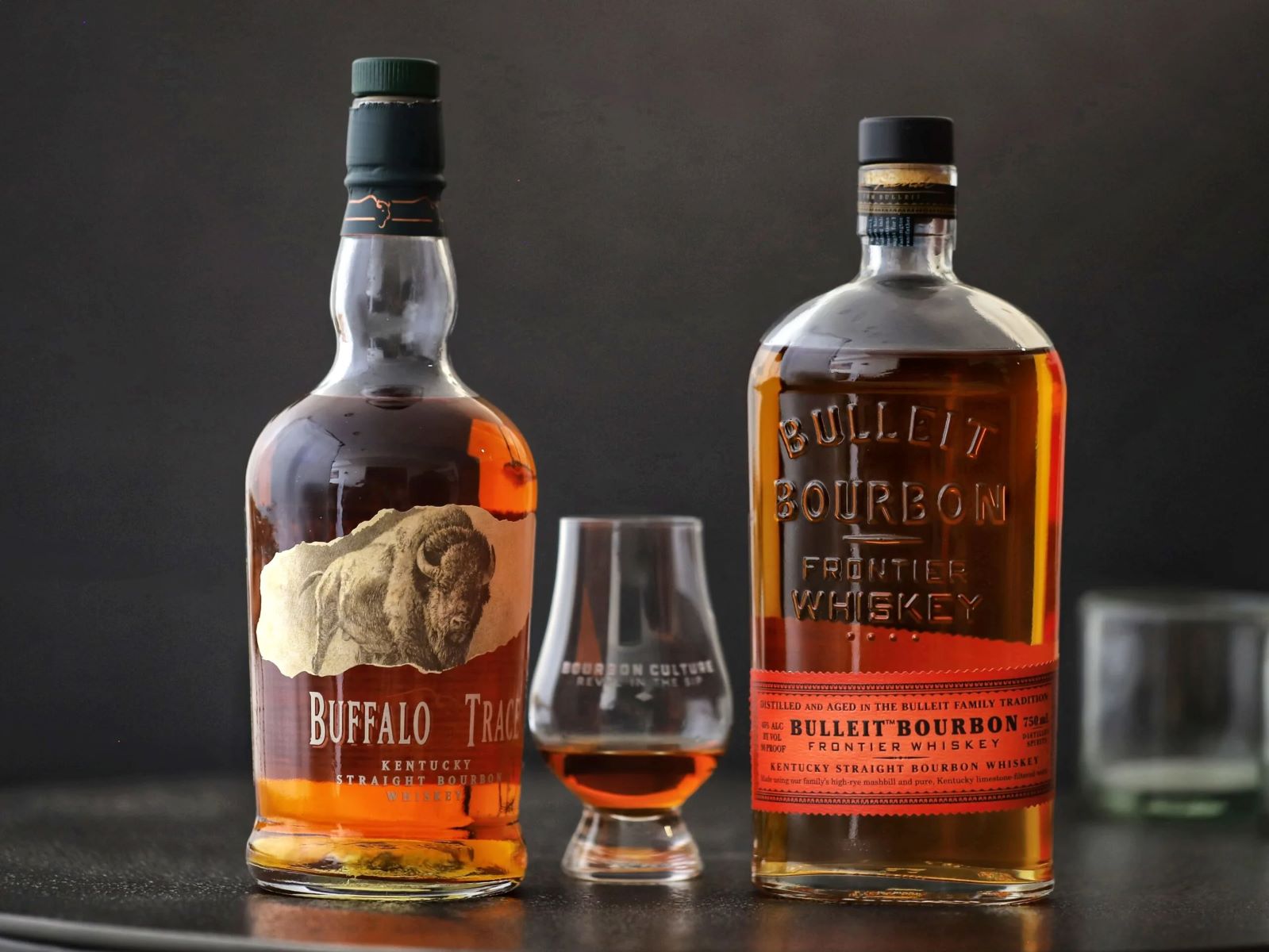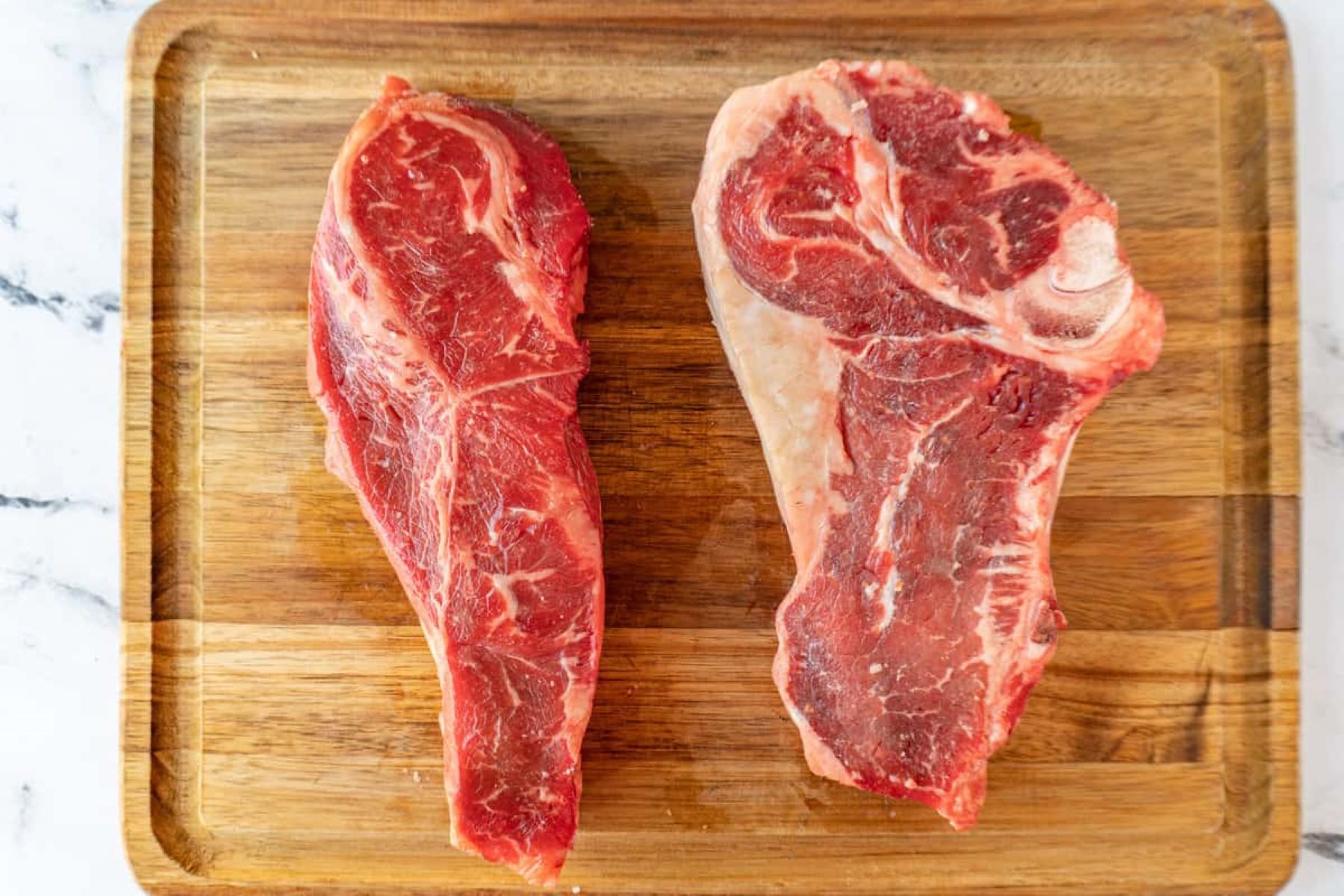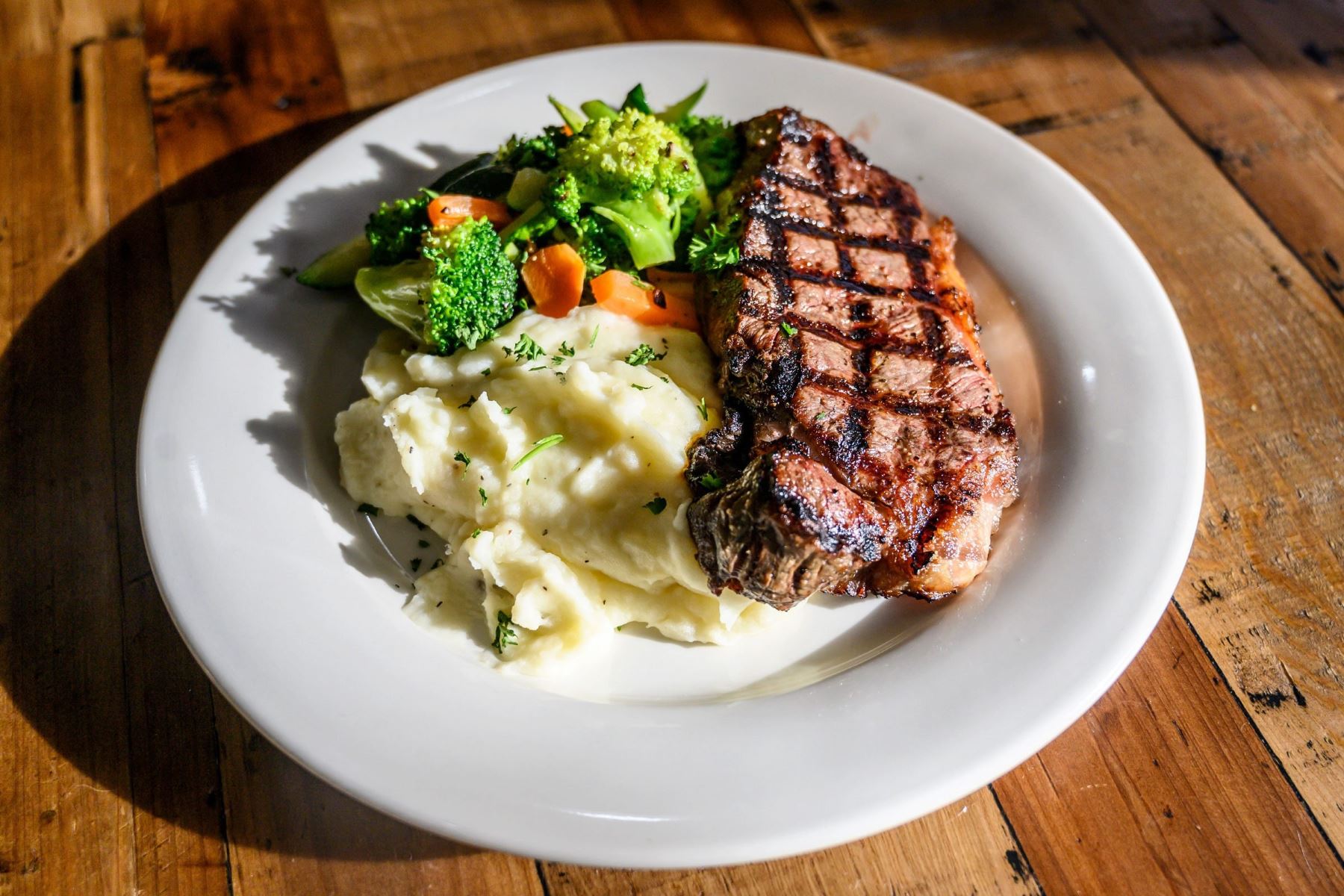Home>Food and Cooking>The Ultimate Showdown: Bourbon Whiskey Vs. Scotch – Which Reigns Supreme?


Food and Cooking
The Ultimate Showdown: Bourbon Whiskey Vs. Scotch – Which Reigns Supreme?
Published: February 3, 2024
Discover the key differences between bourbon whiskey and Scotch, and find out which one takes the crown in this ultimate showdown. Explore the world of food and cooking with this in-depth comparison.
(Many of the links in this article redirect to a specific reviewed product. Your purchase of these products through affiliate links helps to generate commission for Regretless.com, at no extra cost. Learn more)
Table of Contents
- Introduction
- History of Bourbon Whiskey
- History of Scotch
- Production Process of Bourbon Whiskey
- Production Process of Scotch
- Flavor Profile of Bourbon Whiskey
- Flavor Profile of Scotch
- Aging Process of Bourbon Whiskey
- Aging Process of Scotch
- Popular Bourbon Whiskey Brands
- Popular Scotch Brands
- The Debate: Bourbon vs. Scotch
- Conclusion
Introduction
When it comes to the world of spirits, few beverages evoke as much passion and debate as bourbon whiskey and Scotch. These two iconic spirits have captivated the palates of connoisseurs and casual drinkers alike, each with its own rich history, distinct production processes, and unique flavor profiles. As we delve into the nuances of bourbon whiskey and Scotch, we embark on a journey through time and tradition, exploring the origins, production methods, and cultural significance of these beloved libations.
Bourbon whiskey, deeply rooted in American heritage, exudes a sense of rugged individualism and frontier spirit. Its history is intertwined with the fabric of the United States, tracing back to the late 18th century when settlers in Kentucky began distilling corn-based spirits. On the other hand, Scotch, with its origins in the misty hills and glens of Scotland, carries the weight of centuries of tradition and craftsmanship. The art of Scotch distillation has been honed over generations, with each dram carrying the essence of the Scottish landscape and culture.
As we embark on this exploration, we will uncover the intricate production processes that distinguish bourbon whiskey from Scotch. From the grains used to the aging methods employed, each step in the production journey imparts distinct characteristics to these spirits. Furthermore, we will delve into the flavor profiles of bourbon whiskey and Scotch, unraveling the complex interplay of aromas and tastes that define each spirit.
In the following sections, we will dissect the aging processes of bourbon whiskey and Scotch, shedding light on the transformative effects of time and oak. Additionally, we will shine a spotlight on popular brands from both categories, showcasing the diversity and craftsmanship that define the world of bourbon and Scotch.
As we navigate through the realms of bourbon whiskey and Scotch, we will confront the age-old debate of which spirit reigns supreme. While some swear by the bold, sweet notes of bourbon, others find solace in the smoky, peaty allure of Scotch. The clash of cultures and palates manifests in this spirited rivalry, inviting enthusiasts to take sides and defend their libation of choice.
Join us on this captivating journey as we unravel the mystique and allure of bourbon whiskey and Scotch, delving into the heart of what makes these spirits timeless icons in the world of libations.
History of Bourbon Whiskey
The history of bourbon whiskey is deeply intertwined with the pioneering spirit of the American frontier. Its origins can be traced back to the late 18th century when settlers in Kentucky began distilling a unique style of whiskey. The precise genesis of the term "bourbon" remains shrouded in folklore, but it is widely believed to have been named after Bourbon County in Kentucky. This region, with its fertile soil and abundant corn harvests, provided the ideal conditions for whiskey production.
One pivotal moment in bourbon whiskey's history was the Whiskey Rebellion of 1794, which led to the enactment of the Excise Whiskey Tax. This legislation spurred westward migration, as many distillers sought refuge in the untamed expanses of Kentucky to evade the tax collectors. It was in this rugged terrain that bourbon whiskey began to flourish, harnessing the abundance of corn as its primary grain.
The 19th century marked a period of significant growth for bourbon whiskey, with the development of efficient distillation techniques and the establishment of iconic distilleries. Notably, the introduction of charred oak barrels for aging revolutionized the flavor profile of bourbon, imparting it with the distinct caramel and vanilla notes that are synonymous with the spirit today.
The Prohibition era of the 1920s dealt a severe blow to the bourbon industry, forcing many distilleries to shutter their operations. However, the resilience of bourbon whiskey prevailed, and it experienced a resurgence following the repeal of Prohibition in 1933. This revival set the stage for bourbon's ascent to becoming a quintessential American spirit, cherished for its rich heritage and robust character.
In 1964, bourbon whiskey was officially recognized as a distinctive product of the United States, cementing its status as a cultural symbol. This designation, enshrined in the Congressional Resolution, affirmed the legacy and craftsmanship that define bourbon whiskey.
Today, the allure of bourbon whiskey continues to captivate enthusiasts worldwide, with a diverse array of expressions that showcase the artistry and innovation of modern distillers. From small-batch releases to single barrel offerings, bourbon whiskey remains a testament to the enduring legacy of American craftsmanship and ingenuity.
History of Scotch
The history of Scotch whisky is a captivating tale woven into the fabric of Scotland's rich cultural tapestry. Its origins can be traced back centuries, with the earliest records of distillation dating as far back as the late 15th century. The art of whisky-making in Scotland evolved from a humble craft practiced in monasteries to a revered tradition that has become synonymous with the Scottish identity.
In the misty hills and glens of Scotland, whisky production flourished, fueled by the bountiful barley harvests and pristine waters that define the Scottish landscape. The term "whisky" itself is derived from the Gaelic "uisge beatha," meaning "water of life," a testament to the reverence with which the spirit is held in Scottish culture.
The evolution of Scotch whisky witnessed the emergence of distinct regional styles, each bearing the imprint of its terroir. From the robust, peat-infused malts of Islay to the elegant and nuanced expressions of the Highlands, Scotch whisky embodies the diverse topography and climate of Scotland.
The 18th century marked a pivotal juncture in the history of Scotch whisky, as the introduction of the column still revolutionized the distillation process, paving the way for the production of smoother and more refined spirits. This technological advancement, coupled with the burgeoning global demand for Scotch, propelled the industry into a period of unprecedented growth and innovation.
The 19th century witnessed the formalization of whisky production, with the implementation of regulations and standards that sought to uphold the integrity and quality of Scotch. The passing of the Excise Act in 1823, often heralded as the birth of modern Scotch whisky, legalized small-scale distillation and set forth guidelines that shaped the industry's trajectory.
The late 19th and early 20th centuries brought both prosperity and adversity to the world of Scotch whisky. The phylloxera epidemic, coupled with economic downturns, posed significant challenges to distillers. However, the resilience and ingenuity of the industry prevailed, leading to a renaissance marked by the global recognition and appreciation of Scotch whisky.
In contemporary times, Scotch whisky stands as a beacon of tradition and excellence, with a diverse spectrum of expressions that cater to a global audience. From the peaty allure of Islay malts to the smooth, honeyed notes of Speyside whiskies, each sip of Scotch encapsulates centuries of craftsmanship and artistry.
The history of Scotch whisky is a testament to the enduring legacy of Scotland's whisky-making heritage, a legacy that continues to inspire aficionados and connoisseurs, transcending borders and generations.
Production Process of Bourbon Whiskey
The production of bourbon whiskey is a meticulous and time-honored process that begins with the careful selection of grains. Unlike other whiskey varieties, bourbon must contain a minimum of 51% corn in its grain mash, imparting the spirit with its signature sweetness and depth of flavor. This primary grain is complemented by secondary grains such as rye, wheat, and malted barley, each contributing distinct nuances to the final product.
The process commences with milling, where the grains are ground into a coarse meal to facilitate the release of starches during the subsequent mashing stage. The milled grains are then combined with water and cooked to form a thick mash, which serves as the foundation for fermentation. The addition of yeast initiates the fermentation process, converting the sugars present in the mash into alcohol, yielding a low-proof liquid known as "distiller's beer."
Following fermentation, the distillation phase unfolds in copper pot stills or column stills, where the distiller's beer is heated to separate alcohol from water and impurities. This double distillation process refines the spirit, resulting in a high-proof distillate that embodies the essence of the mash.
Once distilled, the clear spirit is meticulously monitored as it undergoes the aging process in charred new oak barrels. The aging period is a defining aspect of bourbon whiskey production, as the spirit matures and interacts with the wood, absorbing rich flavors and developing a deep amber hue. The charred oak imparts caramel, vanilla, and oak-derived compounds, contributing to the complex and robust flavor profile that bourbon is renowned for.
Regulations stipulate that bourbon must be aged for a minimum of two years to bear the "straight bourbon" designation, although many expressions are aged for far longer periods, further enhancing their depth and complexity.
The art of crafting bourbon whiskey demands a harmonious blend of tradition, expertise, and patience. From the careful selection of grains to the transformative alchemy of aging, each step in the production process contributes to the distinctive character and allure of this quintessentially American spirit.
Production Process of Scotch
The production process of Scotch whisky is a time-honored tradition that encompasses meticulous craftsmanship and adherence to stringent regulations. It begins with the careful selection of malted barley, the primary grain used in the production of single malt Scotch whisky. The barley undergoes a process known as malting, where it is soaked in water, allowed to germinate, and then dried using peat smoke, a crucial step that imparts the characteristic smoky and earthy flavors to certain Scotch whiskies.
Once malted, the barley is ground into a coarse flour known as grist, which is then combined with hot water in a large vessel called a mash tun. This process triggers enzymatic reactions that convert the starches in the barley into fermentable sugars, resulting in a sugary liquid known as wort. The wort is then transferred to fermentation vessels, where yeast is added to initiate the fermentation process. Over the course of several days, the yeast converts the sugars in the wort into alcohol, yielding a low-alcohol liquid called "wash."
The next stage in the production process involves distillation, a critical step that defines the character of Scotch whisky. The wash is distilled in copper pot stills, where it is heated to produce a raw spirit known as "new make spirit." This spirit undergoes a double distillation process in most Scotch whisky production, resulting in a high-proof distillate that captures the essence of the fermented wash.
Following distillation, the new make spirit is transferred to oak casks for aging, a transformative phase that shapes the flavor profile of Scotch whisky. The aging process occurs in warehouses or "bonded warehouses," where the casks are carefully stored to mature over many years. The porous nature of the oak allows the spirit to interact with the wood, absorbing compounds that contribute to the whisky's complexity and depth of flavor. The aging period also allows the whisky to mellow and develop nuanced characteristics, influenced by factors such as the climate, humidity, and the previous contents of the cask.
The art of crafting Scotch whisky demands a profound understanding of the intricate interplay between raw ingredients, fermentation, distillation, and aging. Each stage in the production process is imbued with tradition, expertise, and an unwavering commitment to quality, resulting in the diverse array of Scotch whiskies that captivate enthusiasts around the globe.
Flavor Profile of Bourbon Whiskey
Bourbon whiskey is revered for its rich and complex flavor profile, characterized by a harmonious interplay of sweet, spicy, and oaky notes that captivate the senses. The distinctive combination of grains, fermentation, distillation, and aging imparts bourbon with a myriad of aromas and tastes that make it a beloved libation for enthusiasts worldwide.
Upon nosing a glass of bourbon, one is greeted by a bouquet of enticing aromas. The initial impression often reveals notes of caramel, toffee, and vanilla, a testament to the influence of the charred oak barrels in which the spirit matures. These luscious and sweet aromas are complemented by hints of butterscotch and maple, evoking a sense of warmth and indulgence.
The first sip of bourbon unravels a symphony of flavors that dance across the palate. The sweetness of corn, the primary grain in bourbon, takes center stage, offering a smooth and velvety foundation. This sweetness is balanced by the peppery and spicy undertones contributed by rye, adding a delightful kick to the whiskey's profile. The interplay of sweet and spicy notes creates a dynamic and robust flavor experience that lingers long after the last sip.
Furthermore, the oak aging process bestows bourbon with an array of woody and earthy elements. Subtle hints of toasted oak, char, and cedar intermingle with the spirit's inherent sweetness, adding layers of depth and complexity. These woody nuances are often accompanied by a gentle warmth that emanates from the bourbon, providing a comforting and satisfying sensation.
The flavor profile of bourbon whiskey is a testament to the artistry and precision that define its production. Each sip offers a journey through a tapestry of flavors, inviting enthusiasts to savor the intricate nuances and captivating aromas that distinguish bourbon as a quintessential American spirit. Whether enjoyed neat, on the rocks, or as the foundation of a classic cocktail, bourbon whiskey's flavor profile embodies the essence of tradition, craftsmanship, and timeless indulgence.
Flavor Profile of Scotch
The flavor profile of Scotch whisky is a captivating tapestry of aromas and tastes, intricately woven through centuries of tradition and craftsmanship. Each sip of Scotch unveils a symphony of sensory experiences, inviting enthusiasts to embark on a journey through the diverse and nuanced flavors that define this revered spirit.
Upon nosing a glass of Scotch, one is greeted by a kaleidoscope of aromas that evoke the essence of the Scottish landscape. The initial impression often reveals delicate floral notes, reminiscent of heather and wildflowers, which are intertwined with hints of honey and malt. These fragrant and evocative aromas transport the imbiber to the serene moors and glens of Scotland, capturing the essence of the whisky's terroir.
The first sip of Scotch unravels a complex interplay of flavors that dance across the palate. The sweet, malty foundation of barley takes center stage, offering a smooth and velvety texture that embodies the heart of traditional Scotch whisky. This sweetness is often accompanied by subtle undertones of dried fruits, such as figs and raisins, adding layers of depth and richness to the whisky's profile.
Furthermore, the peat smoke, a hallmark of certain Scotch whiskies, imparts a distinctive smoky and earthy character that is synonymous with the rugged landscapes of Scotland. The peat smoke infuses the whisky with notes of bonfire, ash, and maritime brine, evoking a sense of warmth and nostalgia. This elemental aspect of Scotch whisky's flavor profile serves as a testament to the ancient traditions of kiln-drying malted barley, a practice that has endured for generations.
The aging process further enriches the flavor profile of Scotch whisky, as the spirit matures in oak casks, absorbing the essences of the wood and developing a myriad of complex flavors. Subtle hints of vanilla, toffee, and spices intertwine with the whisky's inherent characteristics, bestowing it with a symphony of flavors that culminate in a lingering, satisfying finish.
The flavor profile of Scotch whisky is a testament to the artistry and heritage that define this timeless libation. Each sip offers a sensorial voyage through the landscapes, traditions, and ingenuity of Scotland, encapsulating the essence of Scotch whisky as a cherished emblem of cultural heritage and unparalleled craftsmanship.
Aging Process of Bourbon Whiskey
The aging process is a pivotal stage in the production of bourbon whiskey, wielding a transformative influence that imbues the spirit with depth, complexity, and character. As the clear distillate enters the charred new oak barrels, it embarks on a journey of maturation that shapes its flavor profile and elevates its allure.
The oak barrels, typically crafted from American white oak, serve as vessels of alchemical transformation, infusing the bourbon with a myriad of flavors and aromas. The charring of the barrels prior to filling plays a crucial role, as it caramelizes the wood sugars, creating a layer of char that imparts rich, smoky undertones to the aging spirit.
Over the course of aging, the bourbon whiskey undergoes a series of dynamic interactions with the oak, drawing out compounds that contribute to its distinctive taste. The porous nature of the wood allows the spirit to breathe, facilitating the exchange of flavors between the bourbon and the barrel. This intricate dance between the bourbon and the oak gives rise to a symphony of flavors, ranging from caramel and vanilla to subtle notes of spice and toasted oak.
Furthermore, the aging process engenders a process of oxidation, wherein the bourbon interacts with the air seeping through the barrel staves. This gradual oxidation mellows the spirit, rounding out any harsh edges and harmonizing its myriad components. The result is a smooth, well-balanced whiskey that embodies the artistry and patience of the aging process.
The duration of aging is a critical factor in shaping the character of bourbon whiskey. While the legal requirement stipulates a minimum aging period of two years for straight bourbon, many expressions undergo maturation for far longer durations. As the bourbon matures, it absorbs flavors from the wood, undergoes chemical transformations, and gradually develops a rich, amber hue that is emblematic of its time spent in the barrel.
The culmination of the aging process is marked by the expert assessment of master distillers, who discern the optimal moment to remove the bourbon from the barrels. This meticulous judgment ensures that the bourbon attains a harmonious balance of flavors and a velvety smoothness that captivates the palate.
In essence, the aging process of bourbon whiskey is a testament to the artistry and patience that define this quintessentially American spirit. Each barrel represents a chapter in the whiskey's journey, capturing the essence of time, tradition, and the enduring allure of bourbon.
Aging Process of Scotch
The aging process of Scotch whisky is a captivating journey that unfolds within the hallowed confines of oak casks, where the spirit undergoes a metamorphosis that shapes its character and bestows it with a symphony of flavors. As the newly distilled spirit is carefully transferred into the casks, it embarks on an odyssey of maturation that is fundamental to the creation of the revered elixir known as Scotch whisky.
The oak casks, often crafted from European or American oak, serve as custodians of time, imparting the whisky with a tapestry of aromas and tastes. The porous nature of the wood allows the spirit to breathe, facilitating the exchange of compounds between the whisky and the barrel. This intricate interplay gives rise to a spectrum of flavors, ranging from the warm embrace of vanilla and toffee to the subtle nuances of spices and dried fruits.
Over the course of aging, the whisky delves into the depths of the wood, extracting compounds that imbue it with complexity and depth. The oak casks act as repositories of history, having previously held fortified wines, sherry, bourbon, or other spirits, infusing the whisky with residual flavors and essences that contribute to its multifaceted profile.
The duration of aging is a pivotal factor in shaping the character of Scotch whisky. As the whisky matures, it undergoes a gradual alchemy within the cask, absorbing flavors from the wood and undergoing chemical transformations that bestow it with a rich, amber hue. The aging process mellows the whisky, harmonizing its myriad components and refining its texture, culminating in a smooth and velvety spirit that captivates the senses.
The climatic conditions of the aging environment further influence the whisky, as the fluctuating temperatures and humidity contribute to the intricate process of maturation. The whisky breathes in the cool, damp air of the warehouse, allowing it to evolve and develop nuanced characteristics over the years.
In essence, the aging process of Scotch whisky is a testament to the artistry and tradition that define this revered libation. Each cask holds within it the legacy of time, encapsulating the essence of Scotland's whisky-making heritage and the enduring allure of Scotch whisky.
Popular Bourbon Whiskey Brands
The world of bourbon whiskey is replete with a diverse array of esteemed distilleries and iconic brands that have left an indelible mark on the spirits landscape. These brands showcase the artistry, innovation, and time-honored traditions that define bourbon whiskey, offering enthusiasts an unparalleled selection of expressions to savor and explore.
-
Maker's Mark: Renowned for its distinctive red wax seal, Maker's Mark has carved a niche for itself as a quintessential bourbon brand. With a focus on craftsmanship and consistency, Maker's Mark delivers a smooth, approachable whiskey characterized by its trademark sweetness and balanced flavors.
-
Woodford Reserve: Embodying the essence of Kentucky's bourbon heritage, Woodford Reserve is celebrated for its commitment to small-batch production and meticulous attention to detail. The brand's portfolio features a range of expressions, each exuding complexity, depth, and a rich, velvety texture that captivates the palate.
-
Buffalo Trace: As one of the oldest distilleries in the United States, Buffalo Trace boasts a legacy steeped in tradition and innovation. Its portfolio encompasses an array of bourbons, from the eponymous Buffalo Trace Bourbon to the highly sought-after Pappy Van Winkle range, showcasing a spectrum of flavors and profiles that cater to discerning enthusiasts.
-
Four Roses: With a legacy dating back to the 19th century, Four Roses is revered for its commitment to quality and craftsmanship. The brand's bourbons are distinguished by their floral and fruity aromas, underpinned by a velvety smoothness that has garnered acclaim from aficionados worldwide.
-
Wild Turkey: Known for its bold and robust character, Wild Turkey has become synonymous with the rugged spirit of Kentucky. The brand's portfolio features a range of expressions, including the iconic Wild Turkey 101, revered for its high-proof intensity and rich, spicy notes that leave a lasting impression.
-
Bulleit Bourbon: Embracing a frontier-inspired ethos, Bulleit Bourbon pays homage to the pioneering spirit of the American West. Its high-rye mash bill imparts a distinct spiciness and depth, creating a bourbon that resonates with both traditionalists and modern enthusiasts seeking a bold, flavorful experience.
-
Jim Beam: A stalwart in the world of bourbon, Jim Beam stands as a testament to enduring craftsmanship and heritage. The brand's diverse lineup, ranging from the classic Jim Beam White Label to premium small-batch releases, showcases a breadth of expressions that cater to a wide spectrum of palates.
These iconic bourbon whiskey brands represent the pinnacle of American distilling, each offering a unique perspective on tradition, innovation, and the art of whiskey-making. Whether enjoyed neat, on the rocks, or as the foundation of classic cocktails, these brands stand as beacons of excellence, inviting enthusiasts to savor the rich tapestry of flavors and stories encapsulated within each bottle.
Popular Scotch Brands
The realm of Scotch whisky is adorned with a constellation of revered distilleries and iconic brands that have etched their legacy in the annals of spirits history. These esteemed brands embody the essence of Scotland's whisky-making heritage, offering an expansive tapestry of expressions that cater to a diverse spectrum of palates and preferences.
-
Glenfiddich: As a pioneer in the world of single malt Scotch whisky, Glenfiddich holds a hallowed status, revered for its unwavering commitment to tradition and innovation. The brand's diverse portfolio encompasses an array of expressions, ranging from the classic 12-year-old to the opulent 21-year-old, each encapsulating the distillery's hallmark flavors of pear, oak, and subtle floral notes.
-
Macallan: Renowned for its dedication to sherry cask maturation, Macallan stands as a paragon of excellence in the realm of Scotch whisky. The brand's rich and opulent expressions, such as the revered Macallan Sherry Oak and the rare Macallan Fine & Rare series, exemplify the artistry and precision that define the distillery's offerings.
-
Laphroaig: Embodying the rugged spirit of Islay, Laphroaig has carved a niche for itself with its distinctive peaty and smoky whiskies. The brand's expressions, characterized by bold maritime flavors and medicinal undertones, evoke the untamed landscapes of the island, captivating enthusiasts with their evocative and robust profiles.
-
Highland Park: Nestled in the Orkney Islands, Highland Park stands as a beacon of craftsmanship and tradition. The distillery's whiskies, renowned for their harmonious balance of smoky, heather-honey sweetness, and rich fruitiness, pay homage to the untamed beauty of the island, offering a sensorial voyage through the rugged landscapes of Orkney.
-
Glenmorangie: Celebrated for its pursuit of innovation and creativity, Glenmorangie has redefined the boundaries of Scotch whisky craftsmanship. The brand's expressions, notably the Glenmorangie Original and the esteemed Glenmorangie Signet, showcase a spectrum of flavors, ranging from citrus and floral notes to decadent chocolate and spice, reflecting the distillery's unwavering commitment to excellence.
-
Ardbeg: Revered for its unapologetically peaty whiskies, Ardbeg embodies the raw, elemental allure of Islay. The brand's expressions, such as the iconic Ardbeg 10 Year Old and the complex Ardbeg Uigeadail, transport enthusiasts to the windswept shores of Islay, offering a visceral and profound experience of peat, smoke, and maritime influence.
-
Balvenie: With a steadfast dedication to craftsmanship and tradition, Balvenie has earned acclaim for its range of handcrafted single malts. The distillery's expressions, including the revered Balvenie DoubleWood and the exquisite Balvenie PortWood, exemplify the brand's commitment to nuanced flavors, honeyed sweetness, and a velvety, indulgent texture.
These iconic Scotch whisky brands stand as testaments to the enduring legacy of Scotland's whisky-making heritage, each offering a unique narrative and a sensorial journey through the landscapes, traditions, and ingenuity that define Scotch whisky. Whether savored neat, with a splash of water, or as the centerpiece of a captivating whisky cocktail, these brands invite enthusiasts to immerse themselves in the rich tapestry of flavors and stories encapsulated within each bottle.
The Debate: Bourbon vs. Scotch
The debate between bourbon and Scotch is a spirited clash of cultures, palates, and traditions, igniting fervent discussions among enthusiasts and novices alike. At the heart of this debate lies a fundamental dichotomy of flavors, production methods, and regional legacies, each embodying a distinct ethos that captivates aficionados on a global scale.
Bourbon, with its roots deeply embedded in American history, exudes a sense of rugged individualism and frontier spirit. Crafted primarily from corn and aged in charred new oak barrels, bourbon is celebrated for its sweet, robust profile, tinged with caramel, vanilla, and a peppery kick. Its all-American appeal resonates with those drawn to its bold, unapologetic character, reflective of the pioneering ethos that defines the United States' whiskey heritage.
On the other side of the spectrum, Scotch whisky stands as a venerable symbol of Scotland's rich cultural tapestry and centuries-old tradition. Crafted predominantly from malted barley and often imbued with the smoky allure of peat, Scotch whisky captivates the senses with its diverse regional profiles, ranging from the elegant and nuanced expressions of the Highlands to the robust, peat-infused malts of Islay. Each sip of Scotch offers a sensorial voyage through the rugged landscapes and ancient traditions of Scotland, encapsulating the essence of the country's whisky-making heritage.
The clash between bourbon and Scotch extends beyond mere flavor preferences, delving into the intricacies of production methods, aging techniques, and the cultural significance that underpins each spirit. As enthusiasts take sides in this spirited rivalry, they find themselves navigating a labyrinth of flavors, aromas, and historical narratives, each vying for supremacy in the realm of libations.
Ultimately, the debate between bourbon and Scotch transcends the confines of personal taste, embodying a celebration of heritage, craftsmanship, and the enduring allure of fine spirits. Whether one's allegiance lies with the bold, sweet notes of bourbon or the smoky, evocative profile of Scotch, the debate serves as a testament to the rich tapestry of flavors and traditions that define the world of whiskey, inviting enthusiasts to savor the distinctive essence of each spirit.
Conclusion
In conclusion, the world of spirits is enriched by the timeless appeal of bourbon whiskey and Scotch, each embodying a rich tapestry of history, tradition, and craftsmanship. The journey through the history, production processes, flavor profiles, aging techniques, and iconic brands of bourbon and Scotch has unveiled the captivating narratives that define these revered libations.
Bourbon whiskey, deeply rooted in American heritage, exudes a bold and robust character, reflecting the pioneering spirit of the United States' whiskey-making legacy. From the fertile lands of Kentucky to the charred oak barrels in which it matures, bourbon encapsulates the essence of American ingenuity and resilience.
Conversely, Scotch whisky stands as a testament to Scotland's enduring cultural heritage, with each sip offering a sensorial voyage through the rugged landscapes and ancient traditions of the country. The diverse regional styles, from the peaty malts of Islay to the elegant expressions of the Highlands, showcase the depth and diversity of Scotch whisky's profile.
The debate between bourbon and Scotch, while steeped in personal preferences, serves as a celebration of heritage, craftsmanship, and the enduring allure of fine spirits. Whether one's allegiance lies with the bold, sweet notes of bourbon or the smoky, evocative profile of Scotch, the debate invites enthusiasts to savor the distinctive essence of each spirit.
As we reflect on the journey through the realms of bourbon whiskey and Scotch, it becomes evident that these revered libations are more than mere beverages; they are living embodiments of culture, tradition, and the human spirit's unyielding pursuit of excellence. Whether enjoyed neat, on the rocks, or as the foundation of classic cocktails, bourbon and Scotch stand as timeless icons in the world of libations, inviting enthusiasts to savor the rich tapestry of flavors and stories encapsulated within each bottle.
In essence, the ultimate showdown between bourbon whiskey and Scotch unveils a spirited rivalry that transcends personal preferences, embodying a celebration of heritage, craftsmanship, and the enduring allure of fine spirits. This timeless debate serves as a testament to the rich tapestry of flavors and traditions that define the world of whiskey, inviting enthusiasts to savor the distinctive essence of each spirit.













